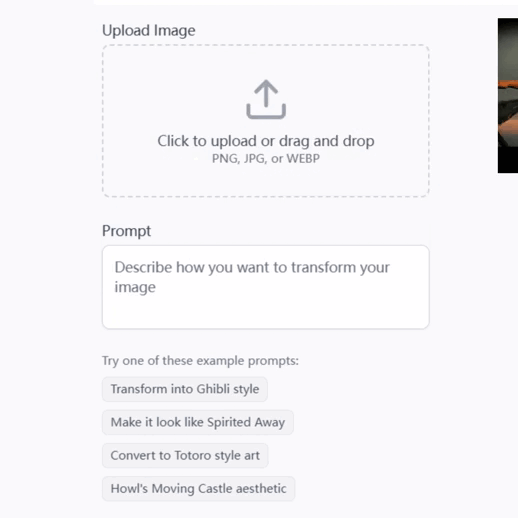
Industrial Cleanup - AI-powered Environmental Cleanup

Welcome! Let's explore responsible industrial cleanup together.
Revolutionizing industrial site cleanup with AI
What are the best practices for industrial site cleanup?
How can innovative technologies improve environmental cleanup?
What are the environmental impacts of improper industrial waste disposal?
How can safety protocols be enhanced during industrial cleanup operations?
Get Embed Code
Introduction to Industrial Cleanup
Industrial cleanup encompasses a broad range of activities aimed at removing pollutants, hazardous materials, and waste from industrial sites to mitigate environmental damage and ensure safety. This field is crucial for maintaining ecosystem health, protecting public health, and complying with environmental regulations. It involves various methods, including physical, chemical, and biological cleanup techniques, tailored to the specific type of pollution and site conditions. Examples of industrial cleanup scenarios include remediation of oil spills in water bodies, decontamination of soil polluted by heavy metals, and cleanup of chemical spills in manufacturing facilities. These activities are designed not only to address the immediate hazards but also to restore sites for safe future use, emphasizing the importance of sustainable practices and environmental stewardship. Powered by ChatGPT-4o。

Main Functions of Industrial Cleanup
Soil Remediation
Example
Use of phytoremediation to remove heavy metals from contaminated soil
Scenario
In an area affected by industrial runoff, plants known for their ability to absorb specific pollutants are used to extract heavy metals from the soil, eventually harvested and disposed of safely.
Water Decontamination
Example
Implementation of oil water separators and bioremediation techniques
Scenario
Following an oil spill in a river, oil water separators are deployed to mechanically separate oil from water. Concurrently, bioremediation processes introduce microorganisms that degrade oil residues, thus cleaning the water.
Waste Management and Disposal
Example
Secure landfilling and incineration of hazardous waste
Scenario
Hazardous waste from a chemical production site is transported to a secure landfill designed to prevent leachate from contaminating groundwater. Some waste types are incinerated under high temperatures to neutralize hazardous components.
Chemical Spill Response
Example
Use of absorbents and neutralizing agents for chemical spill cleanup
Scenario
In the event of an acid spill at a factory, specialized absorbent materials are spread over the spill to contain it, followed by the application of neutralizing agents to mitigate the hazard before final cleanup and disposal.
Ideal Users of Industrial Cleanup Services
Manufacturing Facilities
These include plants and factories that may deal with hazardous materials and chemicals. They benefit from industrial cleanup services to manage spills, dispose of waste safely, and maintain compliance with environmental regulations.
Oil and Gas Industry
Given the high risk of spills and the handling of toxic substances, the oil and gas sector requires cleanup services for spill response, site remediation, and decommissioning of old sites to prevent environmental damage.
Government and Municipalities
Responsible for public land and waterways, government entities need industrial cleanup services to address pollution from various sources, including illegal dumping and runoff, ensuring the protection of public health and natural resources.
Mining Companies
Mining activities can lead to significant environmental impacts, including soil and water contamination. Cleanup services are essential for these companies to manage waste, rehabilitate sites, and comply with environmental standards.

How to Use Industrial Cleanup
1
Start with a visit to yeschat.ai to explore Industrial Cleanup capabilities through a free trial, no signup or ChatGPT Plus required.
2
Identify the specific industrial site or environmental cleanup challenge you wish to address, considering factors such as site size, contamination type, and regulatory requirements.
3
Select the most appropriate cleanup technology or method from the platform's recommendations, based on the initial site assessment and desired outcomes.
4
Implement the suggested cleanup procedures, ensuring all safety protocols and environmental regulations are strictly followed to mitigate any potential harm.
5
Monitor and evaluate the cleanup process through the platform's tracking tools, adjusting strategies as necessary to achieve optimal environmental restoration.
Try other advanced and practical GPTs
Industrial Farming
Empowering Farming with AI

Home Security Advisor
AI-Powered Home Security Insights

Quick Chef
Simplify Cooking with AI-Powered Recipes

Home Health Reg Expert
Navigating Home Health Regulations with AI

Home Ally
Your AI-Powered Home Companion

Home Assistant GPT
Empowering your smart home with AI

Industrial Design
Designing Tomorrow, Today with AI

Real Estate Market Master
Empowering Real Estate Decisions with AI

Cultura Insight Pro
Empowering corporate culture with AI

GPTComplianceChecker[Aifrontier.info]
Simplifying Social Media Compliance
![GPTComplianceChecker[Aifrontier.info]](https://r2.erweima.ai/i/0ndrBSCPSVyTr8-o4KUuJQ.png)
Music Industry Advisor
Elevate Your Music Journey with AI Expertise

Silver
Empowering Industries with Silver Intelligence

Detailed Q&A about Industrial Cleanup
What is Industrial Cleanup?
Industrial Cleanup is a process dedicated to the remediation of contaminated industrial sites, focusing on removing pollutants to restore environments and prevent further damage to ecosystems.
What technologies are used in Industrial Cleanup?
Innovative technologies like bioremediation, phytoextraction, soil vapor extraction, and in situ chemical oxidation are commonly used in Industrial Cleanup to efficiently and safely decontaminate sites.
How does Industrial Cleanup ensure safety?
Safety is ensured through rigorous risk assessments, adherence to environmental regulations, and the use of protective equipment by cleanup personnel, minimizing exposure to hazardous substances.
Can Industrial Cleanup handle all types of contaminants?
While Industrial Cleanup can address a wide range of contaminants, including chemicals, heavy metals, and petroleum products, the effectiveness varies depending on the contaminant properties and site conditions.
What are the environmental benefits of Industrial Cleanup?
Environmental benefits include the restoration of ecosystems, prevention of health risks to humans and wildlife, reduction of pollution, and the safe redevelopment of previously unusable industrial sites.





